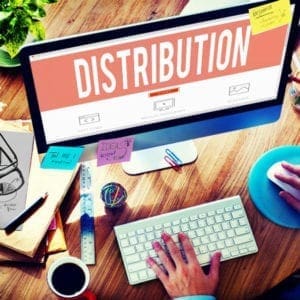 Much has been written and said on the topic of big data and data itself. Over the last years, the cost of data storage has decreased dramatically from about $7 to 10 per GB in the year 2000 to less than $0.03 per GB today.
Much has been written and said on the topic of big data and data itself. Over the last years, the cost of data storage has decreased dramatically from about $7 to 10 per GB in the year 2000 to less than $0.03 per GB today.
Today, the holy grail is no longer the size of the storage and the focus has moved to speed (since the generalization of broadband connection and the introduction of fiber optic), reliability (with cloud hosting taking away most of the pain points experienced by IT managers), and accessibility (Wi-Fi or 4G is now available everywhere and the penetration of mobile devices is expected to reach 72 per centÊglobally by 2020).
New software, mobile applications or tools are launched every day to help businesses and individuals to take advantage of the variety of the data created and collected.
Think at how Google has changed the way you commute with Google Maps, how you discover new books, music, TV shows or movies matching your taste, the advertising or sponsored content on your social media feed. The list goes on and on.
Paradoxically, many hotels are not collecting relevant data or donÕt know how to use and analyze their data to create insight. With proper analysis, data helps business owners to better understand consumer behaviour, make smarter decisions and ultimately improve their bottom line.
Collecting and analyzing data does not require fancy and expensive software. Even the smallest bed and breakfast can design a simple table in Excel, a database in Access or a powerful dashboard with Power BI. Data can and should be collected from many different sources: your booking engine, PMS, point of sales across the hotel (POS), guest satisfaction surveys and online reviews, website and social media analytic.
Consider also additional data points collected from your OTAs extranet, market share reports or rate shopping tools. The type of data business owners or operators can collect and analyze are endless but should include the following items at the very least.
Market segmentation
Segmentation allows you to understand the purpose of the stay, associated booking patterns and to tailor your offering accordingly. The two main segments are transient and group. Those segments should be broken down further by separating transient contracted versus non-contracted andÊgroup business versus group leisure.
Booking channel
Customers have many different ways to book your property. Understanding the different sources of distribution of your property and respective upfront or hidden costs will help you to improve the return of investment of your marketing budget while reducing your overall cost of customer acquisition.
Examples of booking channels are your own website, online travel agents, GDS, in house reservation (phone or email) or central reservation.
Rate plan and room type booked
Analyzing rate plan and room type booked gives you further insight on your customers behavior.
Are they booking your entry level rooms or your most expensive suites? If your top suite is never booked and paid for but your lead in room type is always overbooked, is there an opportunity to adjust your room type differential? Is your prepaid rate more popular than the flexible one?
Assigning a specific rate plan for each contracted account is an easy way to quickly pulse check on those accounts or further slice and dice and identify trends or opportunities.
Arrival, departure and booking dates
Length of stay, booking lead time andÊday of week stay patterns are key factors to design your pricing strategies. Understanding those variables helps you to determine the true value of a contracted account or a regular guest. It also enables you to forecast demand and maximize your opportunities to sell out.
Geographic source
Collecting data on the geographic source of your customers will help your sales team to target the right market when organizing their sales calls. It allows your digital marketing team to focus on the audiences with most growth potentials. It can also assist you to track the effects of changes in air routes served by your nearest airport.
DonÕt limit your data collection to countries but expand it to states or provinces and cities.
Contact details
Email and mobile phone number will be used to communicate with your guests but also to further slice and dice your data; you may have more than one guest named John Smith but email and phone numbers are unique.
About the author
 Pierre MarechalÊis the co-founder and Director of RevUp, a company specialized in supporting hotels in their strategic, revenue management and distribution efforts. Pierre has over 15 years of experience in the hospitality industry. Prior to RevUp, he was the Vice President Commercial Services for Travelodge Hotels Asia and the Regional Director of Revenue Management at Starwood Hotels and Resorts, where he has successfully led the region to achieve unprecedented gain in market share. Throughout his career, he has worked in nine different countries across Europe, Oceania and Asia; he is fluent in four languages. Pierre is an avid reader and a passionate scuba diver.
Pierre MarechalÊis the co-founder and Director of RevUp, a company specialized in supporting hotels in their strategic, revenue management and distribution efforts. Pierre has over 15 years of experience in the hospitality industry. Prior to RevUp, he was the Vice President Commercial Services for Travelodge Hotels Asia and the Regional Director of Revenue Management at Starwood Hotels and Resorts, where he has successfully led the region to achieve unprecedented gain in market share. Throughout his career, he has worked in nine different countries across Europe, Oceania and Asia; he is fluent in four languages. Pierre is an avid reader and a passionate scuba diver.















